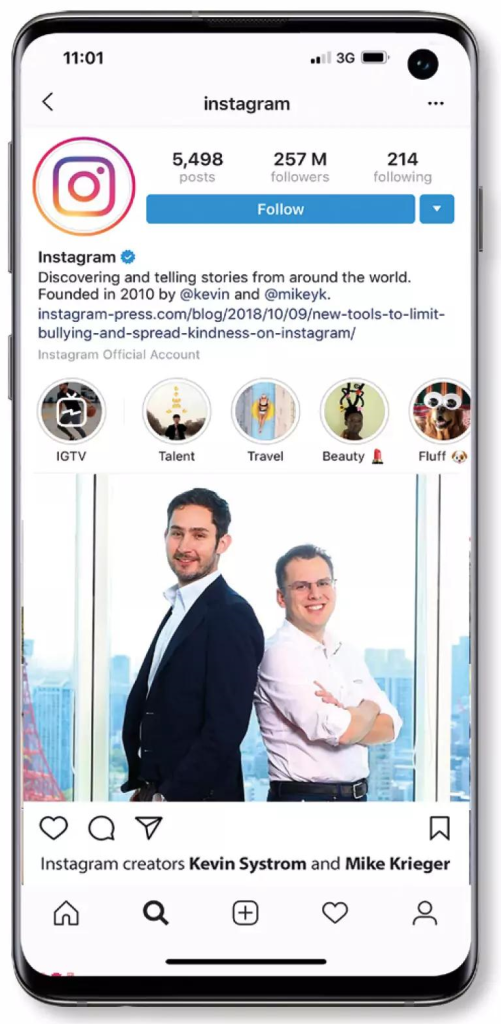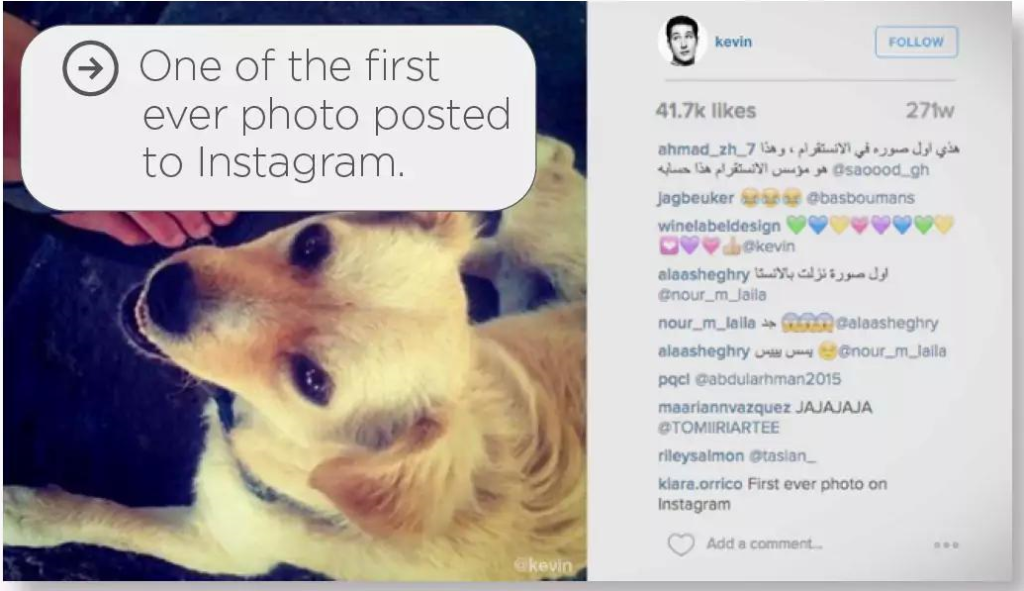History of Instagram

Where do ideas come from? Are they just sparks of random energy that float around waiting for a brain to pass by that’s susceptible enough for them to inhabit and gain fruition? Whatever makes an idea, the spark that powered Instagram was certainly powerful.
Instagram was developed by Kevin Systrom and Mike Krieger (pictured left) towards the end of 2009, after realizing that their project at the time, Burbn, was far too similar to the mobile app Foursquare. The duo put in bids for investors throughout 2010, while working on a new project that focused on mobile photography and photo-sharing. The result was that the early stages of Instagram was born, a portmanteau of instant camera and telegram.
March 2010 saw over 500,000 dollars of investment in Instagram secured, which led to the initial release of the app in October 2010. Incidentally, the first ever photo uploaded, or rather posted to Instagram, was in July (before the app was officially released) and featured a dog in Mexico and Systrom’s girlfriend’s foot. The October release was iOS only and proved to be hugely successful; by December of the same year Instagram hit the one million user mark. Further funding was acquired in 2011, boosting the value of the company to an impressive $20 million. This led to further development on the interface, the number of features and of course an Android version of the app.
It wasn’t until April 2012 when Android users were finally able to get their hands on Instagram for their devices. By then the number of users was in the tens of millions and with the release of the Android version that number increased significantly, with the app being downloaded more than a million times in less than a day.
Behind the scenes, Instagram was quickly becoming one of the most valued social media platforms on the Internet. Although valued at 500,000 dollars at the time, Facebook made an offer and bought Instagram for a cool $1 billion in a deal that was approved towards the end of the year.

With Facebook’s backing, Instagram was well placed in the market and continued to improve its hold on the social media marketplace. 2013 saw features such as photo tagging, video sharing and a direct function that allowed users to send photos directly to specific people from the app.
By the beginning of 2015 Instagram had amassed 300 million users and by August that number had increased to 400 million. Such growth was beneficial to the hundreds of advertisers and companies now operating on Instagram, which led to a change in the app switching its content feed from chronological to algorithmically driven best posts first. This high demand also led to the high followed Instagram influencers being able to command fees of up to $100,000 per sponsored post.
Come the summer of 2015, Instagram decided it was time for a spruce-up. The desktop user interface was redesigned to more closely resemble the mobile website layout, with a more minimalistic appearance and more room dedicated to the photo. The Instagram we know and love today was taking shape. A year later, in April 2016, a Window 10 Mobile Instagram app was released due to popular demand (not least from Microsoft). This new app, which superseded the beta release which came out in2013, added video support, albums and direct messages. In October an app for Windows 10 computers followed. In December 2016 the ability to like comments (as opposed to posts) was added. The opportunity for posters to disable comments was introduced too. Unfortunately, Windows phones never really caught on, and the Windows 10 Mobile app was discontinued in 2019.

Instagram’s founders, Mike Krieger and Kevin Systrom, decided to step down in the Autumn of 2018. Former Facebook executive Adam Mosseri took the reins as head of Instagram, a position he holds to this day. Following criticism, the company reduced the emphasis on likes the following year. As reported by the BBC in July 2019, ‘There is concern social media platforms can contribute to low self-esteem and feelings of inadequacy in young people.’ In several countries, the company implemented a new system where the number of likes on a post was only shown to the person who made the post in question. As Mia Garlick, Facebook Australia and New Zealand director of policy put it, “We hope this test will remove the pressure of how many likes a post will receive, so you can focus on sharing the things you love.”
In October 2019, Instagram introduced Threads, a feature of messaging. It proved unpopular with users (it was discontinued in December 2021), but has since offered the basis for Meta’s own Threads app, launched as a rival to X (previously Twitter).
The third decade of the 21st century has brought us some great new features. ‘Co-Watching’ was introduced in March 2020. This allowed users to share posts in video calls. The TikTok-like Reels followed in August, followed by Vertical Stories in February 2021, another feature inspired by TikTok. The following month a welcome safety feature was introduced which stopped adults messaging teens who don’t follow them.
Instagram’s Notes feature went live in December 2022, after being trialed for around six months. This let you share text notes over the platform. The following year we got GIF support, ‘verified’ badges and new measures to help stop the spread of false information. And the feature? We’ll have to wait and see, but one thing’s for sure. Instagram will go from strength to strength.





You must be logged in to post a comment.